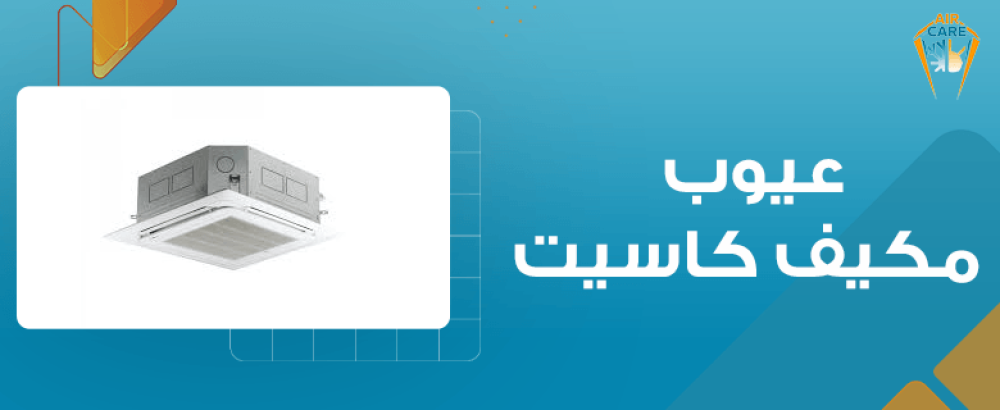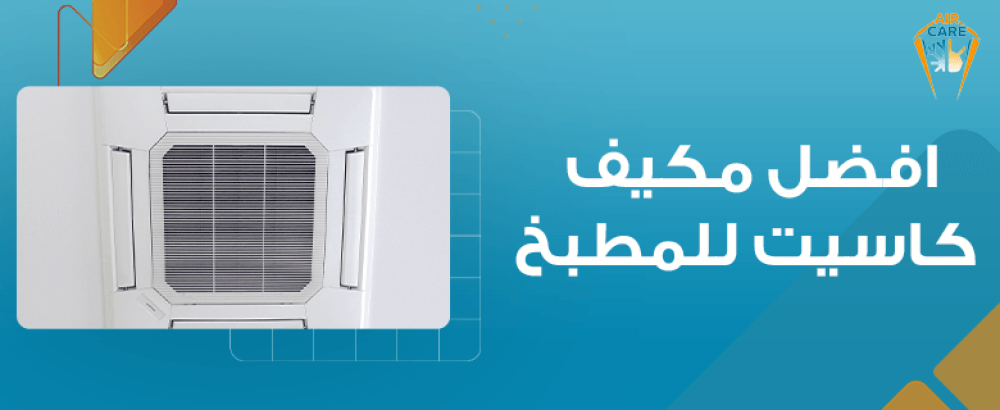- #افضل مكيف كاسيت للمطبخ
- #مكيف كاسيت توزيع هواء
- #مكيف كاسيت موفر للطاقة
- #تركيب مكيف كاسيت
- #افضل مكيفات كاسيت
Best cassette air conditioner for kitchen
Have you ever tried cooking in a stuffy, poorly ventilated kitchen? The heat escaping from stoves, ovens, and even electrical appliances can make the atmosphere stifling and unbearable. That's why the need for an efficient kitchen cooling system becomes an unavoidable necessity. Cassette air conditioners provide even distribution of cool air, creating a comfortable cooking environment, with the added benefit of maintaining a functional and aesthetically pleasing space in a modern kitchen.
Finding the best cassette air conditioner for your kitchen isn't just about cooling capacity, but also about combining efficiency, aesthetics, and energy savings.
Why a cassette air conditioner for the kitchen?
- It gives you balanced airflow thanks to 360-degree or 4-way distribution.
- It saves space as it is mounted on the ceiling away from walls and floor.
- Maintains the aesthetics of the kitchen with a practical, compact, and unobtrusive design.
- Saves energy consumption thanks to inverter compressor technology.
- It operates quietly, perfect for cooking and family activities.
How is air distributed?
The best cassette air conditioner for the kitchen blows air in a circular motion in all directions, preventing heat buildup or stifling areas near the stove. This balanced distribution means you'll experience even freshness in every corner of the kitchen, without annoying hot spots or concentrated cold in any one area.
Does it take up space?
Since it's ceiling-mounted, the air conditioner doesn't take up any wall or floor space, giving you a more flexible kitchen for moving around and organizing appliances and furniture without additional obstructions.
Does it fit all designs?
The best cassette air conditioner for the kitchen is an ideal choice for achieving a balance between high performance and elegant interior design. Featuring a built-in ceiling design, it is virtually invisible and does not detract from the aesthetics of the space. Whether your kitchen is modern with metallic accents or classic with warm wood details, this air conditioner blends seamlessly with various styles without overpowering the décor. Instead, it adds a sense of elegance and comfort to the overall design.
What is the advantage of inverter compressor?
The inverter compressor helps save up to 40% on electricity consumption compared to conventional systems. In addition to energy savings, it provides a constant temperature even when cooking heats up. The separation of the outdoor compressor from the indoor unit significantly reduces noise, making the kitchen a comfortable place to cook and enjoy family gatherings.
How to choose the best cassette air conditioner for the kitchen?
Here are the criteria for choosing the best cassette air conditioner for the kitchen:
kitchen size
Choosing the right air conditioner size depends primarily on the size of your kitchen. The larger the room and the more heat sources it contains, such as ovens and stoves, the greater the cooling capacity required. Choosing a unit that's too small will run continuously without providing real comfort, while an oversized unit may unnecessarily increase electricity consumption.
The easiest calculation is to assume that every 12 square meters requires approximately 1 ton of cooling. So, if your kitchen is 24 square meters and has additional high-temperature appliances, you might consider a 2-ton air conditioner to ensure efficient cooling.
What is the difference between air distribution?
The main difference between air distribution systems depends on the shape of the kitchen and how it is used. In open kitchens, you need even airflow to reach every corner, while in rectangular kitchens, organized air direction is more effective.
- 360 degree distribution
- Suitable for open kitchens or those with islands in the middle.
- Distributes air in a circular manner, covering all directions evenly.
- Quartile distribution
- Suitable for rectangular kitchens or kitchens divided into several working areas.
- Allows separate air direction in each direction for increased control.
Does it require special installation?
Cassette air conditioners differ from wall-mounted or window-mounted air conditioners in their installation requirements. They rely on the ceiling as the mounting location and require prior preparation.
- The presence of a dedicated electrical point that can handle the load required for the device.
- Sometimes the ceiling needs to be reinforced to support the weight of the indoor unit.
- Install a suitable outdoor unit in a well-ventilated area.
- Ensure proper drainage paths for condensate to avoid any leakage inside the kitchen.
What are the safety and efficiency standards?
For the air conditioner to be most effective and remain safe in the kitchen environment, several basic specifications must be taken into account:
- Choose an inverter-equipped appliance to reduce electricity consumption.
- Make sure the noise level is low so as not to cause disturbance while cooking.
- Full control over air direction to avoid concentrating cooling on one area.
- Rely on high-quality filters that can purify the air from fumes and grease.
- Ensure the availability of after-sales service and original spare parts to avoid sudden breakdowns.
What are the best cassette air conditioners for the kitchen?
When searching for the best cassette air conditioners for your kitchen, you'll find that Air Care Trading Company offers a complete experience that combines quality and comfort. It offers a wide range of advanced home appliances, along with the ability to shop for the latest products. In the air conditioning section, you'll find the following:
Samsung 4-way 4-ton cassette air conditioner
If you're looking for a powerful solution for cooling a spacious, open-plan kitchen, the Samsung 4-Ton 4-Way Cassette Air Conditioner is a great choice. It features a square, ceiling-mounted design that distributes air evenly in four directions, providing optimal coverage and preventing heat buildup in any corner. Thanks to its inverter compressor technology, it reduces electricity consumption and maintains consistent temperatures even over extended periods of operation. Its modern design also blends easily with a variety of modern kitchen decors.
Samsung 360-degree circular cassette air conditioner, 4 tons
If you prefer more streamlined air distribution, the Samsung 360° Circular 4-Ton Cassette Air Conditioner may be just what you need. Its unique circular design ensures 360-degree airflow, covering the entire kitchen without leaving hot spots. It also features heating and cooling capabilities with inverter technology, which reduces your electricity bill and delivers consistent performance. This model is ideal for large kitchens with central islands or open floor plans.
Samsung 2-ton 4-way cassette air conditioner
For kitchens or medium-sized spaces, the Samsung 2-ton, 4-way cassette air conditioner may be the most practical solution. It takes up little space thanks to its compact, square design, making it easy to install on most ceilings. It distributes air in four directions with remarkable quietness during operation. With inverter technology, you get high efficiency and energy savings. This model is suitable for medium-sized kitchens or even offices that need continuous, undisturbed cooling.
Choosing the best cassette air conditioner for your kitchen offers a balanced combination of comfort and performance efficiency. It ensures even air distribution, preventing heat and odor buildup while maintaining lower energy consumption. The availability of a variety of sizes and designs makes it easy to choose the air conditioner that best suits your kitchen needs and preferred décor style.


